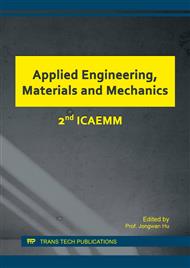p.373
p.378
p.383
p.393
p.399
p.407
p.412
p.420
p.425
A Trend Analysis of Smart City Technology Development
Abstract:
The purpose of this study is to analyze the trends of smart city technology, which has attracted attention recently in relation to its urban revival functions along with changes in the industrial structure in deprived urban areas, and to draw implications. With this aim, the trends by country and detailed research field were analyzed in this study through a technology level analysis, and the technology growth stage and network analysis were examined by utilizing research paper information published worldwide. From these results, it was determined that smart city technology is likely to be commercialized because recently it has reached a maturity stage, and relevant research has been conducted actively mainly by China, the USA, and major European countries. Through this trend analysis, useful information is presented in this study for establishing R&D strategies to preoccupy the smart city technology field.
Info:
Periodical:
Pages:
425-429
Citation:
Online since:
October 2017
Authors:
Keywords:
Price:
Сopyright:
© 2017 Trans Tech Publications Ltd. All Rights Reserved
Share:
Citation:


